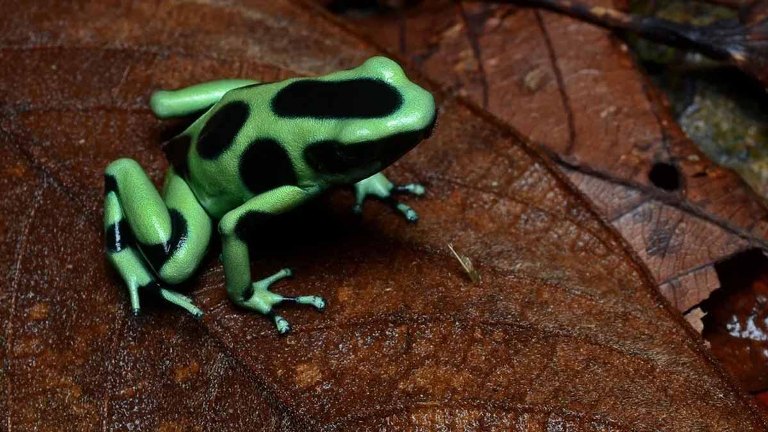
Poison Dart Frogs
Life Desk
Published:29 Apr 2021, 01:41 PM

Poison Dart Frogs
In the midst of the hot and humid Colombian rainforest a nearly naked man walks silently among the trees, looking for his next meal. Spotting a distracted monkey, the hunter readies his blowgun and darts. One shot will be enough. According to a first-hand account from 1825, the dart is “certain death to man or animal wounded by it”. That's because it is laced with poison.
Hunters from Colombia's Embera tribe regularly hunted birds, monkeys and other small animals using poison darts. The poison came from bright yellow frogs just a few centimetres long.
A single “golden poison frog” harbours enough poison to kill 10 grown men, making these frogs perhaps the most poisonous animals alive. They are one of many species of toxic frogs, which are known as poison dart frogs. They are all small: the largest are no more than 6cm long, and some are just 1.5 cm. How did these tiny, beautiful creatures become so poisonous.
Parenting Behavior
Some species display unusual parenting habits, including carrying both eggs and tadpoles on their backs. Although this “backpacking” is not unique among amphibians, male poison dart frogs are exceptional in their care, attending to the clutch, sometimes exclusively, and performing vital transportation duties.
Toxicity
Dendrobatids include some of the most toxic animals on Earth. The two-inch-long golden poison frog has enough poison to kill 10 grown men. Indigenous Emberá people of Colombia have used its powerful poison for centuries to tip their blowgun darts when hunting, hence the genus' common name.
Scientists are unsure of the source of poison dart frogs' toxicity, but it is possible they assimilate plant poisons which are carried by their prey, including ants, termites and beetles. Poison dart frogs raised in captivity and isolated from insects in their native habitat never develop poison.
The medical research community has been exploring possible medicinal uses for some poison dart frog poison. They have already developed a synthetic version of one compound that shows promise as a painkiller.